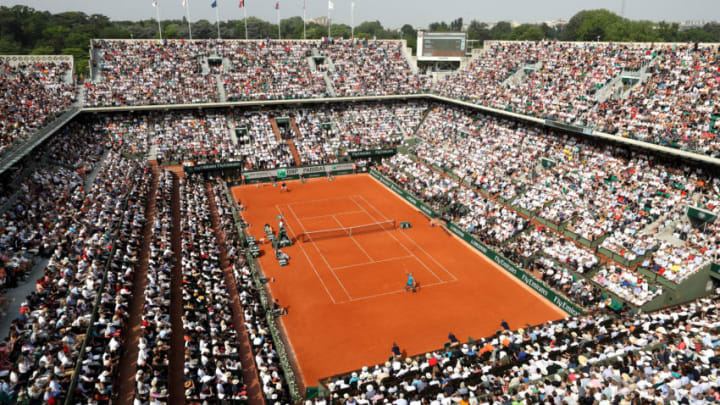Clay court season is here, brining up debate around whether or not the HawkEye system should be introduced for play on the surface.
The clay court season is a small portion of the entire ATP season, covering only 30 percent of the total season. Yet, it stands out, not just because of the slower surfaces but also because of its insistence to not use the HawkEye system that has been in place for ball tracking in the rest of the ATP season.
The HawkEye system has allowed players to challenge calls and players can’t really argue with its decision. That is not the case on clay when there have been numerous instances when players have gone into long drawn out arguments with the chair umpire about the ball mark.
More from Lob and Smash
- Caroline Wozniacki gets her wild card for the Australian Open
- Tennis News: Rafael Nadal, Emma Raducanu and protected rankings
- Martina Navratilova: Money lost by coming out was in the ‘millions’
- Tennis News: Novak Djokovic, Nick Kyrgios and Matteo Berrettini
- Boris Becker and Rick Macci bicker over Carlos Alcaraz
Something like this could be solved easily with a HawkEye system. Plus, most of the clay tournaments have a HawkEye system in place for TV purposes but don’t use them for the challenging systems.
There have been many instances when the players and the chair umpires have not agreed on a mark. In Madrid Masters 2019, in the semi-final between Stefanos Tsitsipas and Rafael Nadal, Tsitsipas stopped a point midway and pointed to a mark on the court sensing that it was out.
The chair umpire came down and saw the mark and deemed it in. The HawkEye system, in place for TV purposes, deemed it out by about 7mm (and that means it was accurate as HawkEye is precise till 2mm).
In the same tournament in the quarter-final between Stan Wawrinka and Nadal, the former hit an inside out forehand that was called out on breakpoint. HawkEye showed that it was in fact in, by about 5mm. Wawrinka got broken due to that wrong call and then went on to lose the match.
More notorious incidents include Rome 2018 match between Karolina Pliskova and Maria Sakkari where the former hit a smash that was called out. The smash was way in but the chair umpire couldn’t find the mark and the point was given to Sakkari. Pliskova got broken due to that bad call and went on to lose the match.
A more infamous call is the Madrid Masters semi-final of 2011 when Roger Federer played Nadal. In the second set, Federer stopped a point break point down, when he deemed the Nadal forehand long. The Chair Umpire came in and called it in. Federer was visibly irate as he claimed that the Umpire was looking at a very different ball mark. Nadal went on to win that set and then the match.
Detractors of HawkEye claim it’s expensive to install HawkEye on Clay courts and that it would require more technological advancements, frequently citing this article but conveniently ignoring that this was written 3 years ago. Surely, technology has advanced in the past 3 years to accommodate HawkEye as a challenging system for the players, especially when it is already used for TV purposes. Players prefer the systems to be as accurate and as far away from human intervention as possible and introducing HawkEye on clay is a positive step in that direction.
